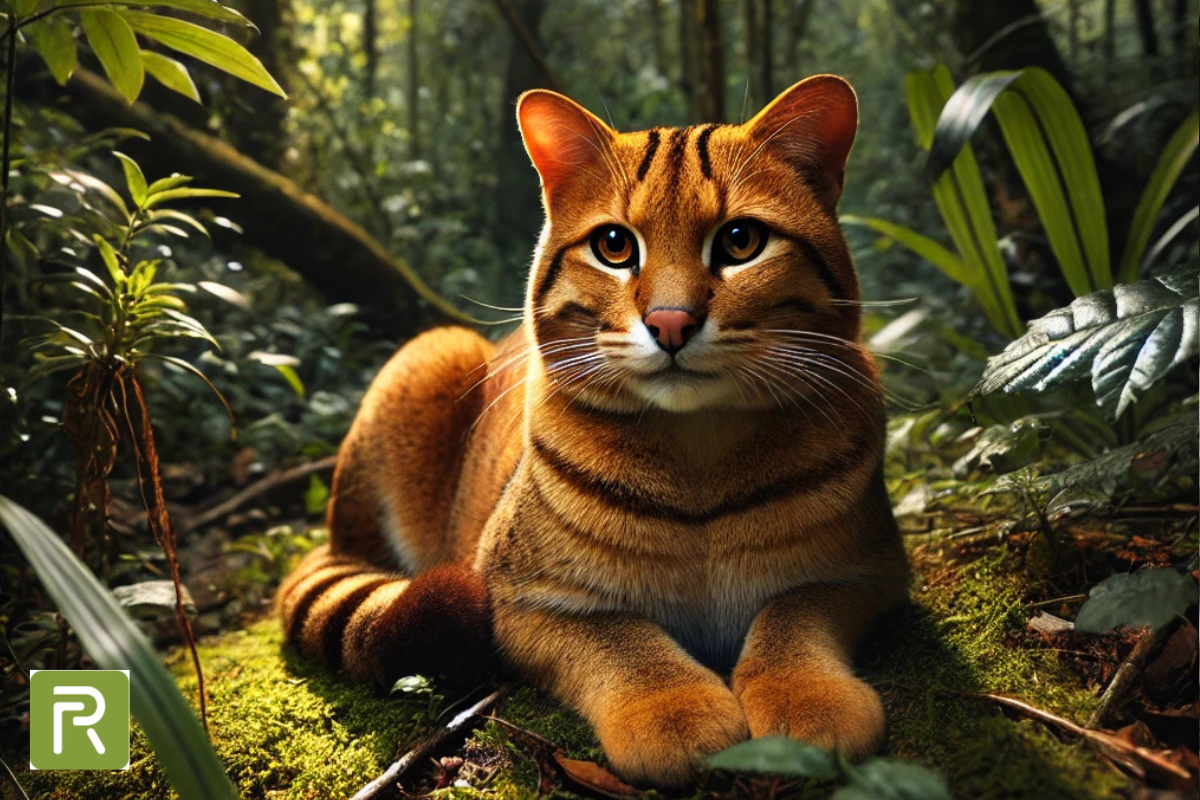The Asian Golden Cat (Cato puma temminckii) is a rare and elusive wild cat found in the dense forests of Southeast Asia. Known for its striking golden-brown coat and solitary nature, this feline is both fascinating and mysterious. Despite being lesser-known compared to big cats like tigers and leopards, the Asian Golden Cat plays a crucial role in its ecosystem.
What Makes the Asian Golden Cat Unique?
The Asian Golden Cat stands out for its versatility and adaptability. Its physical characteristics and behaviors have earned it a revered status in the wild.
- Appearance: Typically golden-brown, but variations like gray, black, and even spotted coats exist.
- Size: Slightly larger than a domestic cat, it measures about 66–105 cm in length with a 40–56 cm tail.
- Nickname: Sometimes called the “fire cat” due to its reddish-golden fur.
Habitat and Range
Where Do Asian Golden Cats Live?
The Asian Golden Cat thrives in a variety of habitats across Southeast Asia, including tropical forests, grasslands, and rocky terrains.
- Geographical Range: Found in countries like India, China, Thailand, Myanmar, and Indonesia.
- Preferred Environment: Dense forests provide cover for hunting and protection.
Adaptability to Climate
Unlike some species, the Asian Golden Cat adapts well to different altitudes, from sea level to 3,000 meters in the Himalayas.
Diet and Hunting Behavior
The Asian Golden Cat is a skilled predator, relying on its agility and stealth.
- Diet: Carnivorous, feeding on birds, rodents, reptiles, and small ungulates like deer.
- Hunting Style: Solitary and nocturnal, it stalks prey silently before pouncing.
Behavior and Social Structure
Solitary Lifestyle
The Asian Golden Cat is primarily solitary, except during mating season or when raising cubs.
- Territorial: Marking its range with scent, it avoids direct confrontation with other cats.
Communication
Though rarely heard, it communicates through growls, hisses, and meows.
Conservation Status
Is the Asian Golden Cat Endangered?
The International Union for Conservation of Nature (IUCN) lists the Asian Golden Cat as Near Threatened.
- Threats: Habitat loss, poaching for fur, and depletion of prey species.
- Conservation Efforts: Protected in many countries, with initiatives to preserve forests and combat poaching.
Why the Asian Golden Cat Matters
The Asian Golden Cat plays a vital role in controlling prey populations, maintaining ecological balance. Its presence indicates a healthy forest ecosystem.
Interesting Asian Golden Cat Facts
- Color Variations: Apart from golden, their coats can be gray, black, or patterned with spots resembling a leopard’s.
- Asian Golden Cat facts: highlight the cultural significance of this species, as in some Asian folklore, the Asian Golden Cat symbolizes protection and strength.
- Elusive Nature: Rarely seen in the wild, it’s considered a “ghost of the forest.”
Protecting the Asian Golden Cat
How You Can Help
- Support organizations dedicated to wildlife conservation.
- Spread awareness about the threats to wild cats and their habitats.
- Promote sustainable practices to reduce deforestation.
Global Conservation Efforts
- Protected under CITES (Convention on International Trade in Endangered Species).
- Developers are creating wildlife corridors to connect fragmented habitats.
FAQs
What does the Asian Golden Cat eat?
It primarily preys on birds, rodents, reptiles, and small mammals, making it a versatile carnivore.
Where can you find the Asian Golden Cat?
It’s found in Southeast Asia, from the Himalayan foothills to tropical rainforests in Thailand and Indonesia.
Why is the Asian Golden Cat endangered?
Deforestation, poaching, and loss of prey are the main threats to its survival.
How does the Asian Golden Cat communicate?
It uses growls, hisses, and scent markings to communicate, especially when defending its territory.
What makes the Asian Golden Cat unique?
Its striking coat variations and ability to adapt to diverse habitats set it apart from other wild cats.
How can I help conserve the Asian Golden Cat?
Support conservation organizations and adopt eco-friendly practices to reduce habitat destruction.




